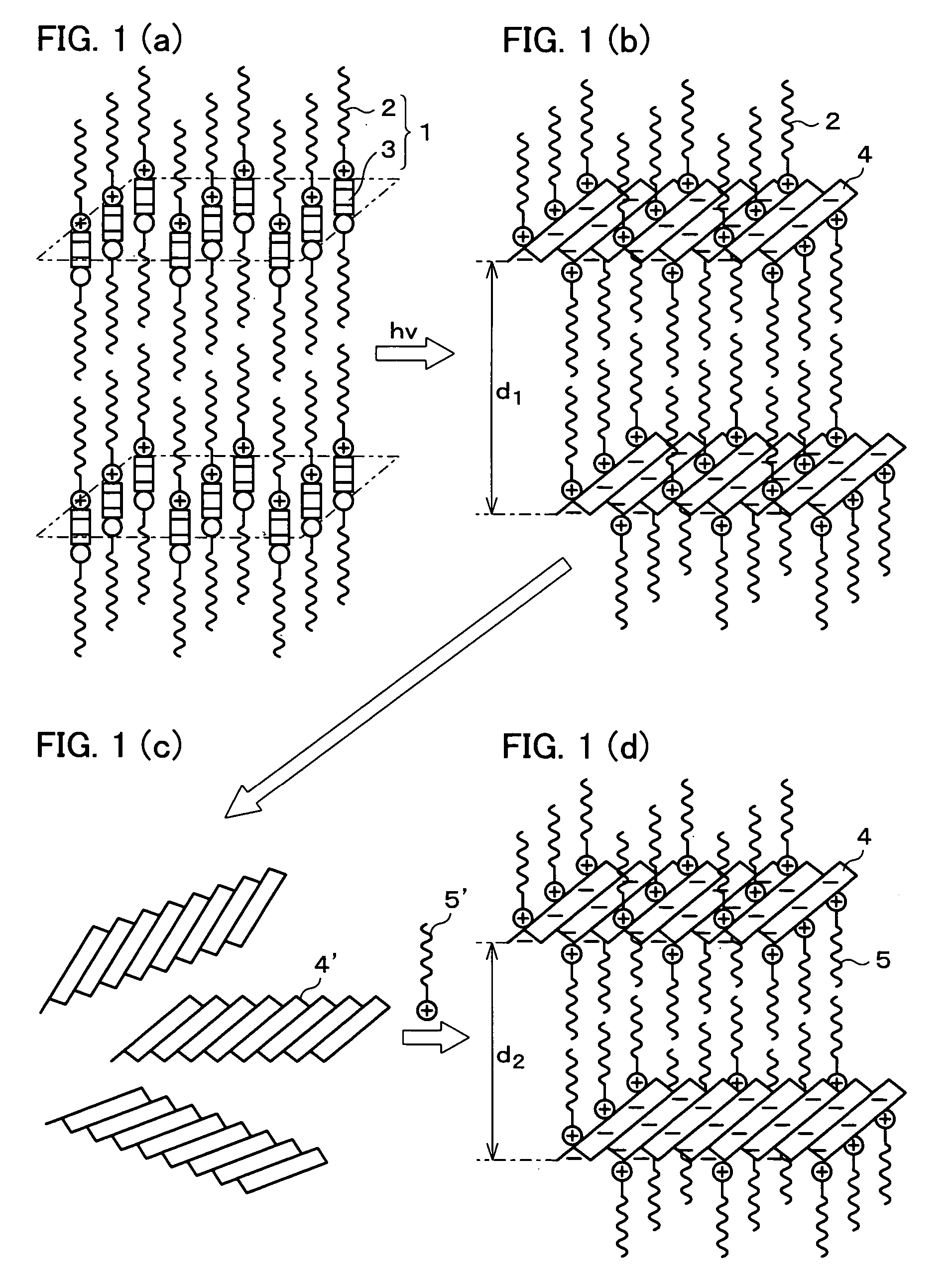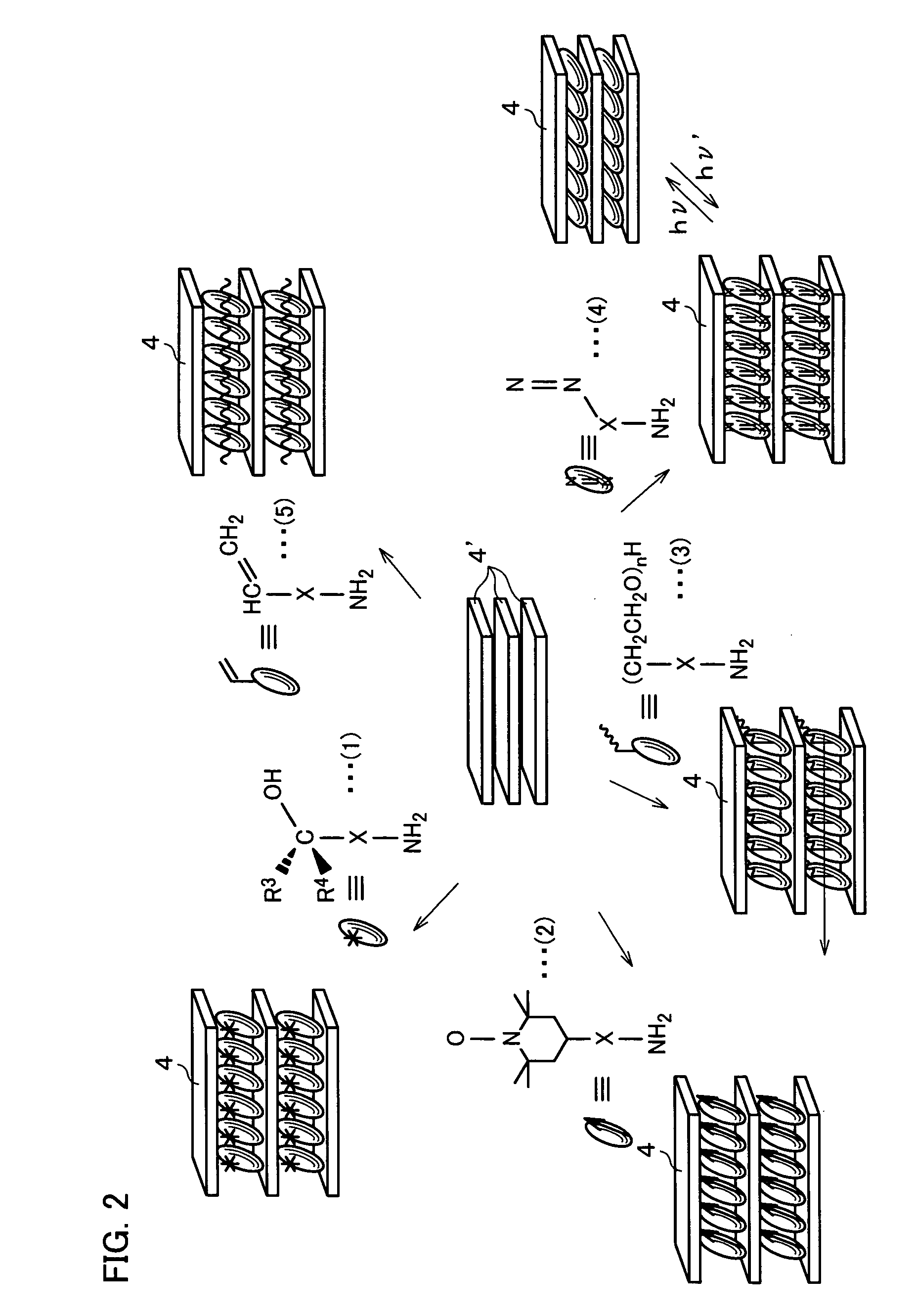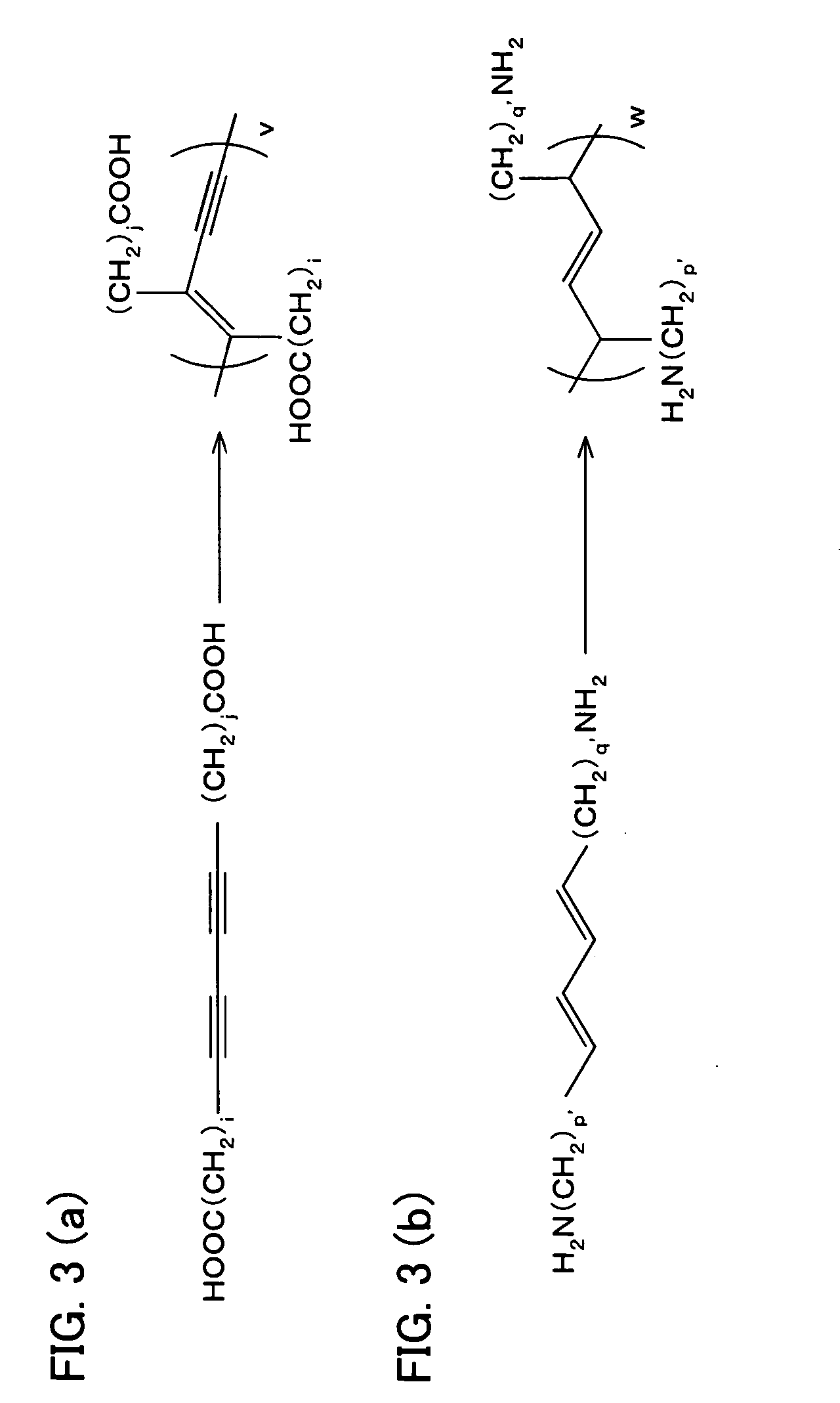Photoresponsive polymer, built-up type diacetylene polymer, crystals of ammonium carboxylates, and processes for production of them
a technology of photoresponsive polymer and built-up type diacetylene, which is applied in the field of photoresponsive polymer, built-up type diacetylene polymer, crystals of ammonium carboxylates, and processes for production of them, can solve the problems of difficult photoisomerization of a usual azobenzene derivative (which includes no amino group), and the inability to obtain polymer crystals with layered structures in a simple manner. , to achiev
- Summary
- Abstract
- Description
- Claims
- Application Information
AI Technical Summary
Benefits of technology
Problems solved by technology
Method used
Image
Examples
example 1
By employing the manufacturing method of the present invention, a crystal of (Z,Z)-muconic benzylammonium, which can be synthesized by solid-state photopolymerization, was synthesized.
0.9291 g (6.54×10−3 mole) of (Z,Z)-muconic acid and 1.4012 g (1.31×10−2 mole) of benzylamine, which is a liquid at a normal temperature, were triturated for 30 minutes in a triturator at a normal temperature, so as to react the (Z,Z)-muconic acid and the benzylamine.
In an IR spectrum (an infrared absorption spectrum) of a product of the reaction, an absorption peak of 1710 cm−1, which derived from carboxyl groups, was not confirmed, but an absorption peak of 1560 cm−1, which derived from carboxylate, was confirmed. In powder X-ray diffraction measurement, as shown in FIG. 6(a), the product of the reaction showed a diffraction pattern identical to a diffraction pattern (FIG. 6(b)) of a crystal of (Z,Z)-muconic benzylammonium produced by a conventional method, in which isolation was performed by rec...
example 2
First, by using a high-pressure mercury lamp, ultraviolet rays were radiated at 30° C. for eight hours onto the crystal of (Z,Z)-muconic benzylammonium synthesized in Example 1. As a result, solid-state photopolymerization of the (Z,Z)-muconic benzylammonium was induced, and an insoluble product was obtained in the solvent. After radiation of the ultraviolet rays was terminated, an unreacted monomer ((Z,Z)-muconic benzylammonium) was extracted by using methanol, thereby isolating the product.
From the fact that, as shown by the curve A in FIG. 7, an absorption peak of 1580 cm−1, which derived from conjugated diene, disappeared from an IR spectrum of the isolated product, it was confirmed that the (Z,Z)-muconic benzylammonium was polymerized to produce a crystal of 2,5-polymuconic benzylammonium. A yield of the 2,5-polymuconic benzylammonium was 3%. By changing radiation time of the ultraviolet rays from eight hours to 72 hours, the yield of the 2,5-polymuconic benzylammonium was i...
example 3
By employing the manufacturing method of the present invention, a crystal of (Z,Z)-muconic dodecylammonium salt, which can be synthesized by solid state photopolymerization, was synthesized. 0.3256 g (2.29×10−3 mole) of (Z,Z)-muconic acid and 0.8493 g (4.58×10−3 mole) of dodecylamine, which is a solid substance at a normal temperature, were triturated for 30 minutes in a triturator at a normal temperature, so as to react the (Z,Z)-muconic acid and the dodecylamine.
In an IR spectrum of a product of the reaction, the absorption peak of 1710 cm−1, which derived from carboxyl groups, was not confirmed, but the absorption peak of 1560 cm−1, which derived from carboxylate, was confirmed. In the powder X-ray diffraction measurement, the product of the reaction showed a diffraction pattern identical to a diffraction pattern (FIG. 6(b)) of a crystal of (Z,Z)-muconic dodecylammonium produced by a conventional method, in which isolation was performed by recrystallization after reactions in ...
PUM
| Property | Measurement | Unit |
|---|---|---|
| structure | aaaaa | aaaaa |
| molecular-weight | aaaaa | aaaaa |
| stability | aaaaa | aaaaa |
Abstract
Description
Claims
Application Information
 Login to View More
Login to View More - R&D Engineer
- R&D Manager
- IP Professional
- Industry Leading Data Capabilities
- Powerful AI technology
- Patent DNA Extraction
Browse by: Latest US Patents, China's latest patents, Technical Efficacy Thesaurus, Application Domain, Technology Topic, Popular Technical Reports.
© 2024 PatSnap. All rights reserved.Legal|Privacy policy|Modern Slavery Act Transparency Statement|Sitemap|About US| Contact US: help@patsnap.com










